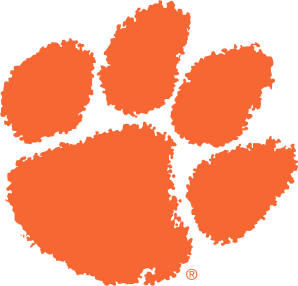 The National Football League (NFL) has its share of rivalries, including Dallas-Washington, Chicago-Green Bay, and Cleveland-Pittsburgh. Yet arguably the one with the most vitriol between fan bases is the Atlanta-New Orleans rivalry. At these games, fans have yelled obscenities at the opposing fans, fought opposing fans, and even attempted to urinate on opposing fans. Before looking at some series statistics and a review of some of the games in this blood feud, an explanation of why the rivalry exists is warranted.
The National Football League (NFL) has its share of rivalries, including Dallas-Washington, Chicago-Green Bay, and Cleveland-Pittsburgh. Yet arguably the one with the most vitriol between fan bases is the Atlanta-New Orleans rivalry. At these games, fans have yelled obscenities at the opposing fans, fought opposing fans, and even attempted to urinate on opposing fans. Before looking at some series statistics and a review of some of the games in this blood feud, an explanation of why the rivalry exists is warranted.
The franchises came into the NFL one year apart, Atlanta in 1966 and New Orleans in 1967. Both cities reside in the Deep South and are about seven hours driving time from one another. The teams have played each other twice a year since 1970, except in the strike-shortened 1982 and 1987 seasons. Both have competed in the same divisions in the National Football Conference since 1970. Geographic proximity, twice-a-year contests, and direct competition for division titles and playoff berths tend to produce rivalries.
Atlanta leads the series 49-43, but New Orleans has won 13 out of the last 17 games. The Falcons are 24-21 against the Saints in Atlanta and 25-22, including a playoff game in 1991, in New Orleans and San Antonio (one game in 2005 because of Hurricane Katrina). New Orleans’ longest winning streak is six in the series while Atlanta’s is 10. Both teams have won five division championships, one conference championship, and have appeared in one Super Bowl. New Orleans has one NFL Championship by virtue of its 2010 Super Bowl (XLIV) win over the Indianapolis Colts.
The rivalry has produced some memorable games. In 1970 the two teams were placed in the same division for the first time and the start of two-games-against-the-other every season commenced. The series began to create some bad blood between the two division brothers in 1973 when the Falcons administered the worst Saints defeat in their history with a 62-7 drubbing at the old Tulane Stadium.
Both games in 1978 came down to the wire. With Atlanta trailing New Orleans in the Superdome with 19 seconds left, Falcons quarterback Steve Bartkowski threw a Hail Mary pass towards the end zone that was tipped by Atlanta receiver Wallace Francis into the hands of teammate Alfred Jackson for a 20-17 Atlanta victory. Two weeks later in Atlanta, the Falcons, down 17-13 at their own 28-yard line with 53 seconds to go, witnessed Bartkowski drive the team down the field and into the end zone with only five seconds left for another 20-17 victory.
In the only postseason encounter between the franchises, Atlanta defeated New Orleans in the Superdome 27-20 in the Wild Card playoff round. Falcons quarterback Chris Miller hit receiver Michael Haynes for the go-ahead 61-yard touchdown with just under three minutes left in the game.
New Orleans re-opened the Superdome on September 25, 2006 against Atlanta after the devastation of Hurricane Katrina. Before a delirious crowd and a national television audience, the Saints dominated the Falcons, 23-3. In the first quarter, New Orleans safety Steve Gleason blocked a punt that teammate Curtis Deloatch recovered in the end zone for a touchdown. Atlanta could produce very little offensively the rest of the game. The contest became the highest-rated program in the history of ESPN. In July 2012, a statue of the Gleason punt block was erected outside the Superdome. Entitled “Rebirth,” the statue represents the resilience of the New Orleans people after the destruction rendered by Hurricane Katrina.
During the Saints’ Super Bowl season of 2009, the teams met again on Monday Night Football in the Superdome. After the first quarter, Atlanta led 14-7, but the Saints scored 21 second-quarter points to take command. Behind quarterback Matt Ryan, the Falcons rallied but saw their hopes dashed by a late fourth quarter Ryan interception at the New Orleans five-yard line. The Saints held on for a 35-27 victory.
During the 2012 season, the Saints came to Atlanta three weeks after giving the Falcons their first loss of the season, 31-27, in New Orleans. As the Saints players, coaches, and staff prepared to leave the airport in a charter bus, airport workers threw eggs at the bus. Possibly inspired by the actions of the soon-to-be unemployed workers, the Falcons intercepted Saints quarterback Drew Brees five times on the way to a 23-13 win.
Brees and the Saints gained a measure of revenge during a Thursday night nationally-televised encounter with the Falcons in the Georgia Dome in 2013. Brees threw a 44-yard touchdown pass to tight end Jimmy Graham and a one yarder to back up tight end Benjamin Watson for a 17-13 Saints victory. Brees surpassed Warren Moon for fifth place on the all-time career passing list after throwing for 278 yards against the Falcons.
No matter the records, games between the Falcons and Saints bring out the best in both teams and the worst in the two fan bases. For the “Who Dat?” Nation and the “Rise Up!” throng, no victory is sweeter than the one against their bitter rivals.





